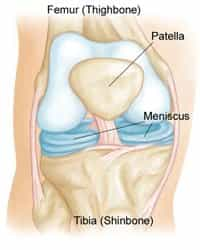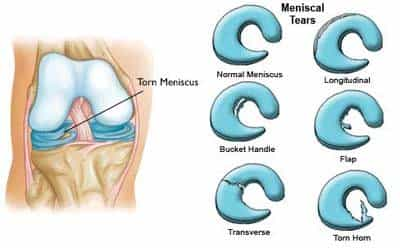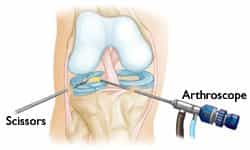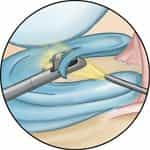Interview About Meniscus Repair With Dr. Max Greig
Dr. Max Greig is a renowned orthopedic surgeon in Mexico, with experience of more than 20 years. Dr. Max and his dedicated medical team combine modern surgery techniques with proven traditional methods to offer the patients the best orthopedic care.
Dr. Max has gladly accepted an interview with PlacidWay, in which he explains what Meniscus Tear is and how it is treated.
PlacidWay: To start with, what exactly is Meniscus Tear?
Dr. Max: Meniscus Tear is one of the most common knee injuries, which occurs especially in athletes and those who perform contact sports. However, anyone can tear a meniscus at any age.

PlacidWay: What is a Meniscus?
Dr. Max: Well, the knee joint is formed from three bones: the thighbone (femur), the shinbone (tibia), and the kneecap (patella). Between the thighbone and shinbone we can find two wedge-shaped pieces of cartilage act as "shock absorbers", also called meniscus. They are tough and rubbery, and their role is to cushion the joint and keep it stable.
PlacidWay: What are the causes of a meniscus tear?
Dr. Max: The meniscus can tear in different ways: longitudinal, parrot-beak, flap, bucket handle or mixed/complex. The sports-related meniscus tear often occurs in conjunction with other knee injuries, such as anterior cruciate ligament tears. Players may squat and twist the knee, causing a tear. Direct contact, like a tackle, is sometimes involved.
Older people are more likely to have degenerative meniscus tears. Cartilage weakens and wears thin over time. Aged, worn tissue is more prone to tears. Just an awkward twist when getting up from a chair may be enough to cause a tear, if the menisci have weakened with age.
PlacidWay: What are the symptoms of a meniscus tear?
Dr. Max: You might feel a "pop" when you tear a meniscus. Most people can still walk on their injured knee and many athletes keep playing with a tear. Over 2 to 3 days, your knee will gradually become more stiff and swollen.
The most common symptoms of meniscus tear are:
- Pain
- Stiffness and swelling
- Catching or locking of your knee
- The sensation of your knee "giving way"
- You are not able to move your knee through its full range of motion
Without treatment, a piece of meniscus may come loose and drift into the joint. This can cause your knee to slip, pop, or lock.

PlacidWay: What should a person with meniscus tear do first?
Dr. Max: The first step is to have a doctor examine the knee and have the McMurray test. Your doctor will bend your knee, then straighten and rotate it. This puts tension on a torn meniscus. If you have a meniscus tear, this movement will cause a clicking sound. Your knee will click each time your doctor does the test.
Because other knee problems cause similar symptoms, your doctor may order imaging tests to help confirm the diagnosis: such as X-rays or Magnetic resonance imaging (MRI). Although x-rays do not show meniscus tears, they may show other causes of knee pain, such as osteoarthritis. The MRI can create better images of the soft tissues of your knee joint, like a meniscus.
PlacidWay: What is the treatment for meniscus tear?
Dr. Max: The treatment depends on the type of meniscus tear, the size and the location, as well as the age of the patient, the activity level and other related injuries.
If your tear is small and on the outer edge of the meniscus, it may not require surgical repair. As long as your symptoms do not persist and your knee is stable, nonsurgical treatment may be all you need.
The RICE protocol is effective for most sports-related injuries. RICE stands for Rest, Ice, Compression, and Elevation.
- Rest. Take a break from the activity that caused the injury. Your doctor may recommend that you use crutches to avoid putting weight on your leg.
- Ice. Use cold packs for 20 minutes at a time, several times a day. Do not apply ice directly to the skin.
- Compression. To prevent additional swelling and blood loss, wear an elastic compression bandage.
- Elevation. To reduce swelling, recline when you rest, and put your leg up higher than your heart.
Non-steroidal anti-inflammatory medicines, such as aspirin and ibuprofen reduce pain and swelling.


Knee Arthroscopy Close-up of meniscectomy
If your symptoms persist with nonsurgical treatment, your doctor gest arthroscopic surgery. Knee arthroscopy is one of the most commonly performed surgical procedures. A miniature camera is inserted through a small incision into the knee to provide a clear view of the inside of the knee, to be able to trim or repair the tear.
- Meniscectomy. In this procedure, the damaged meniscus is trimmed away.
- Meniscus repair. Some meniscus tears can be repaired by suturing (stitching) the torn pieces together. Whether a tear can be successfully treated with repair depends upon the type of tear, as well as the overall condition of the injured meniscus. Because the meniscus must heal back together, recovery time for a repair is much longer than for a meniscectomy.
PlacidWay: What is the procedure after the surgery?
Dr.Max: After surgery, your doctor may put your knee in a cast or brace to keep it from moving. If you have had a meniscus repair procedure, you will need to use crutches for about a month to keep weight off of your knee.
Once the initial healing is complete, your doctor will prescribe rehabilitation exercises. Regular exercise to restore your knee mobility and strength is necessary. You will start with exercises to improve your range of motion. Strengthening exercises will gradually be added to your rehabilitation plan.
For the most part, rehabilitation can be carried out at home, although your doctor may recommend physical therapy. Rehabilitation time for a meniscus repair is about 3 months. A partial meniscectomy requires less time for healing approximately 3 to 4 weeks.
.png)
Dr. Max has performed hundreds of successful orthopedic surgeries so far, using modern equipment and techniques. For more information about the renowned surgeons or the orthopedic procedures he performs, do not hesitate to contact him!
.png)


















Share this listing